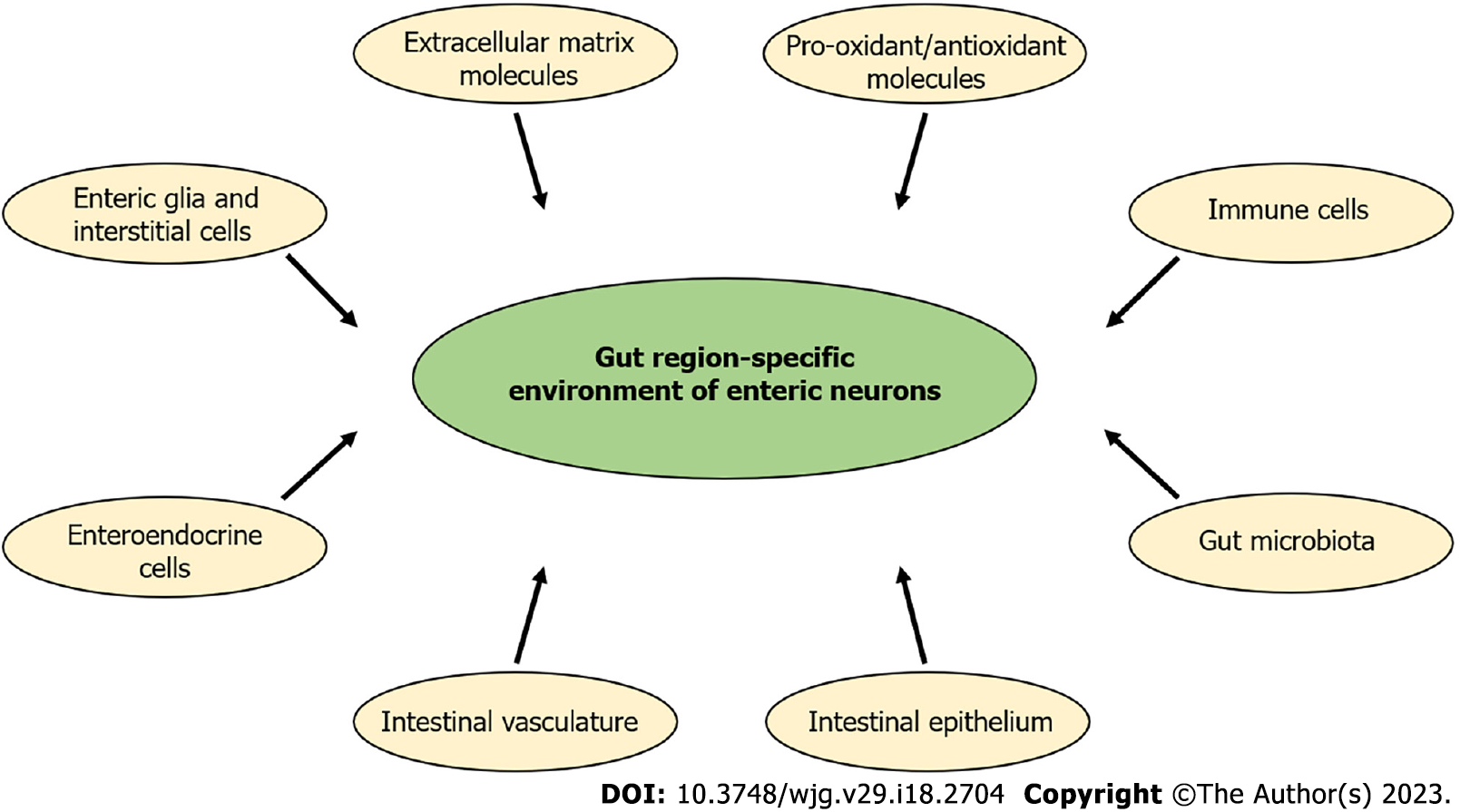Copyright
©The Author(s) 2023.
World J Gastroenterol. May 14, 2023; 29(18): 2704-2716
Published online May 14, 2023. doi: 10.3748/wjg.v29.i18.2704
Published online May 14, 2023. doi: 10.3748/wjg.v29.i18.2704
Figure 1 Representative fluorescent micrograph of a paraffin section of intestinal wall from control rat colon after Protein gene product 9.
5 immunohistochemistry. Protein gene product 9.5 (PGP9.5) (green) was used as a pan-neuronal marker to label neuronal elements and 4',6-diamidino-2-phenylindole (DAPI) (blue) labelled nuclei. A: DAPI; B: PGP9.5; C: DAPI + PGP9.5. M: mucosal layer, SM: Submucosal layer; CM: Circular muscle; LM: Longitudinal muscle; White arrows: Myenteric ganglia, Yellow arrows: Submucous ganglia; PGP9.5: Protein gene product 9.5; DAPI: 4',6-diamidino-2-phenylindole; Scale bar: 200 μm.
Figure 2 Main elements determining the gut region-specific neuronal microenvironment.
Enteric glia cells, interstitial cells of Cajal, intestinal vasculature and epithelium, enteroendocrine cells, intestinal microbiota and immune cells, balance of pro-oxidants and antioxidants and extracellular matrix molecules create and determine a strictly regional environment of enteric neurons in diabetes.
- Citation: Bagyánszki M, Bódi N. Key elements determining the intestinal region-specific environment of enteric neurons in type 1 diabetes. World J Gastroenterol 2023; 29(18): 2704-2716
- URL: https://www.wjgnet.com/1007-9327/full/v29/i18/2704.htm
- DOI: https://dx.doi.org/10.3748/wjg.v29.i18.2704










